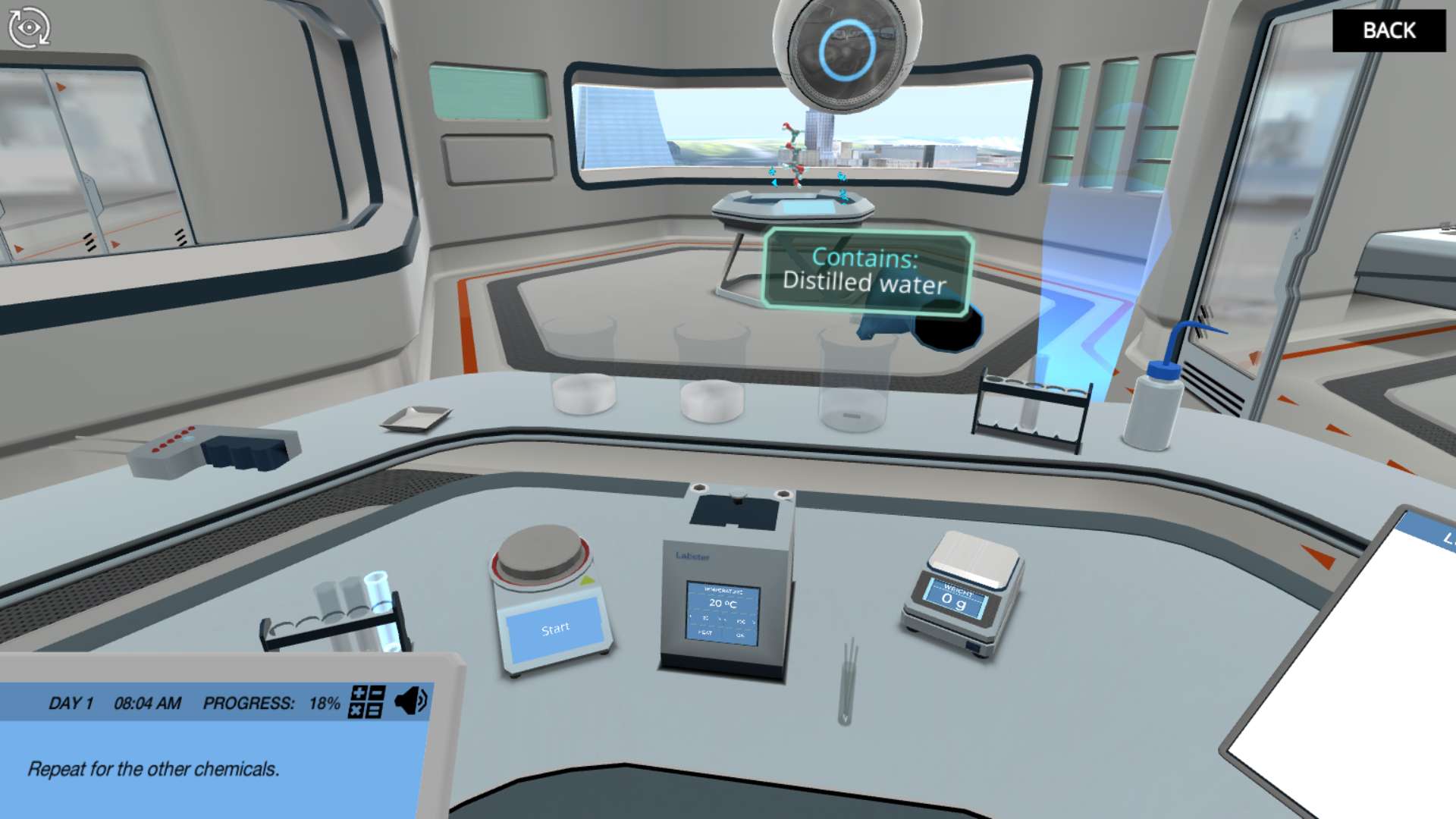Heading 1
Heading 2
Heading 3
Heading 4
Heading 5
Heading 6
Lorem ipsum dolor sit amet, consectetur adipiscing elit, sed do eiusmod tempor incididunt ut labore et dolore magna aliqua. Ut enim ad minim veniam, quis nostrud exercitation ullamco laboris nisi ut aliquip ex ea commodo consequat. Duis aute irure dolor in reprehenderit in voluptate velit esse cillum dolore eu fugiat nulla pariatur.
Block quote
Ordered list
- Item 1
- Item 2
- Item 3
Unordered list
- Item A
- Item B
- Item C
Bold text
Emphasis
Superscript
Subscript
About This Simulation
Join your friend on a quest to analyze two mysterious substances he got from an alchemist to cure his migraine and learn how atoms connect.
Learning Objectives
- Describe the formation of ionic and covalent bonds
- Identify anions and cations
- Apply the octet rule
- Describe ionic lattice structure
- Draw Lewis dot structures
- Explain the formation of single, double, and triple bonds
- Distinguish between ionic compounds and covalent compounds
About This Simulation
Lab Techniques
- Conductivity measurement
- Melting point determination
Related Standards
- HS-PS1-1
- HS-PS2-6
- 2.3. Structure of Ionic Solids
- 2.5 Lewis Diagrams
- 2.1 Types of Chemical Bonds
- 4.1 Ionic bonding and structure
- 4.3 Covalent structures
- 4.2 Covalent bonding
Learn More About This Simulation
Have you ever wondered how atoms are held together? In this simulation, you will learn the basics about atomic bonding in ionic and covalent compounds and how to distinguish those compounds experimentally. With all this knowledge, you will help your friend analyze two mysterious substances he received from an alchemist. By testing their specific physical properties, you’ll be able to identify the nature of the substances. Finally, you will learn how ions form lattice structures and how this influences the property of a compound.
Test solubility and conductivity
Atoms can interact in many different ways, giving compound-specific properties. In the first mission of the Ionic and Covalent Bonds simulation, your task is to choose appropriate laboratory equipment to test the solubility and conductivity of the two substances. You will explore how these properties differ in ionic and covalent compounds.
Draw Lewis dot structures
In the second part of the Ionic and Covalent Bonds simulation, you will learn about the octet rule and how to apply this to building Lewis dot structures in a virtual drawing activity. You will see that there are many ways that covalent bonds can be formed, depending on the compound and electron configuration. You will also learn how to identify lone electron pairs in a covalent bond.
Determine melting points
In the last mission, your task is to determine the melting point of the two substances by using a melting point apparatus. You will explore how your results are connected to the ability of ions to form a lattice structure.
Will you be able to identify the two mysterious substances and help your friend cure his migraine?
Boost STEM Pass Rates
Boost Learning with Fun
75% of students show high engagement and improved grades with Labster
Discover Simulations That Match Your Syllabus
Easily bolster your learning objectives with relevant, interactive content
Place Students in the Shoes of Real Scientists
Practice a lab procedure or visualize theory through narrative-driven scenarios


For Science Programs Providing a Learning Advantage
FAQs
Find answers to frequently asked questions.
Heading 1
Heading 2
Heading 3
Heading 4
Heading 5
Heading 6
Lorem ipsum dolor sit amet, consectetur adipiscing elit, sed do eiusmod tempor incididunt ut labore et dolore magna aliqua. Ut enim ad minim veniam, quis nostrud exercitation ullamco laboris nisi ut aliquip ex ea commodo consequat. Duis aute irure dolor in reprehenderit in voluptate velit esse cillum dolore eu fugiat nulla pariatur.
Block quote
Ordered list
- Item 1
- Item 2
- Item 3
Unordered list
- Item A
- Item B
- Item C
Bold text
Emphasis
Superscript
Subscript
Labster can be integrated within a school's LMS (Learning Management System), and students can access it like any other assignment in their LMS. If your Institution does not choose an LMS integration, students will log in to Labster's Course Manager once they have an account created. Your institution will decide the access method during the sales process.
Labster is available for purchase by instructors, faculty, and administrators at education institutions. Purchasing our starter package, Labster Explorer, can be done using a credit card if you are located in the USA, Canada, or Mexico. If you are outside of North America or are choosing a higher plan, please speak with a Labster sales representative. Compare plans.
Labster simulations are created by real scientists and designed with unparalleled interactivity. Unlike point and click competitors, Labster simulations immerse students and encourage mastery through active learning.
Labster supports a wide range of courses at the high school and university level across fields in biology, chemistry and physics. Some simulations mimic lab procedures with high fidelity to train foundational skills, while others are meant to bring theory to life through interactive scenarios.











.png?fm=jpg&w=450&h=400)






